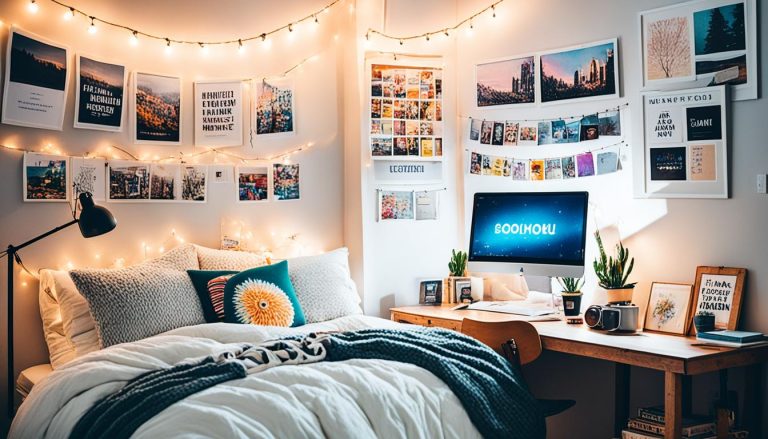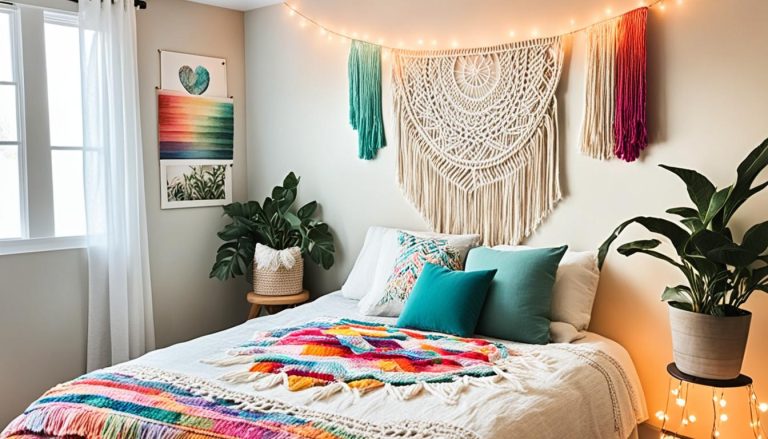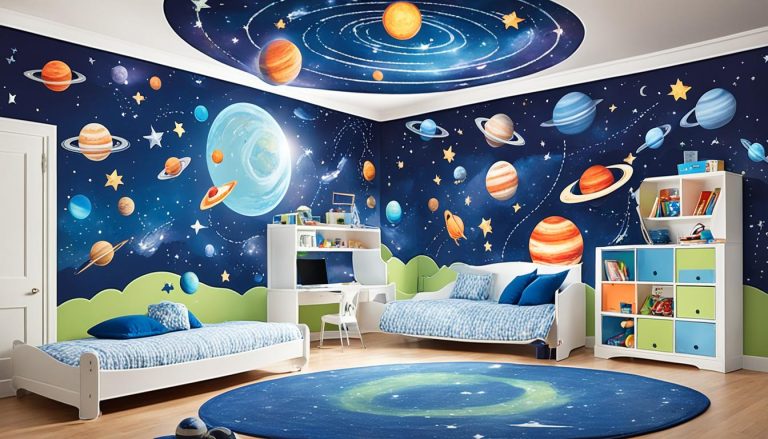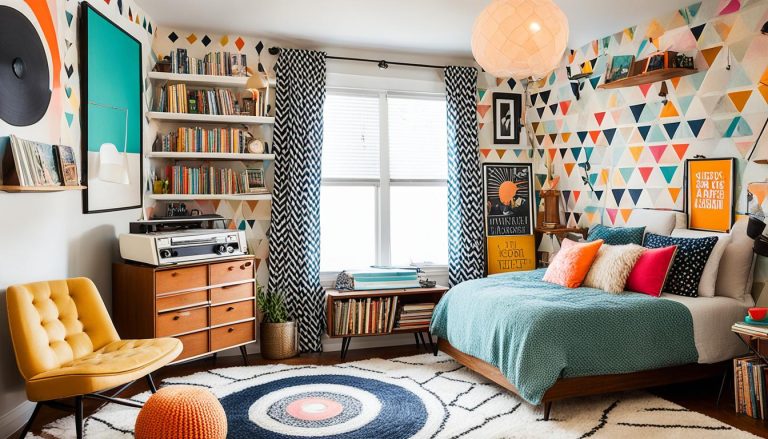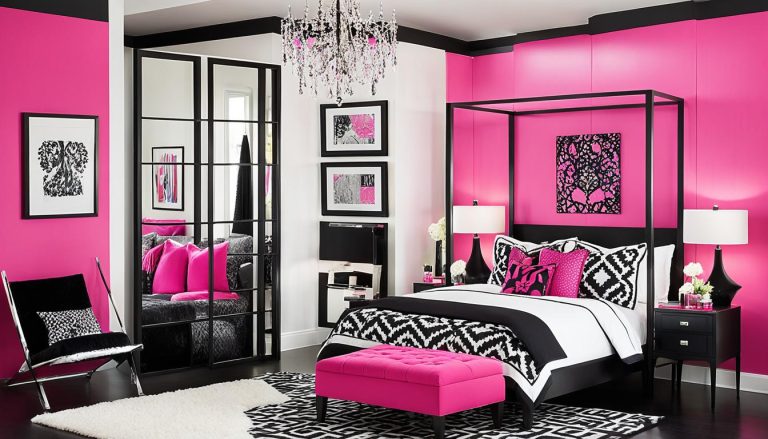Color Psychology in Teen Bedrooms: Mood Boosters
houseremodelingnews.com may earn a commission if you purchase a product through one of our links
“Colors, like features, follow the changes of the emotions,” said Pablo Picasso. This insight shows how color affects our feelings and actions. The colors around us can change our mood and behavior.
Did you know up to 90% of people judge a product by its color first? This fact shows how big an impact colors have on us. When picking colors for a teen’s room, knowing this is key.
Colors have a big effect on teens. For example, blue can make you feel calm and less anxious. Yellow helps with memory and focus. Green, like nature, calms both kids and adults, helping teens with anxiety.
Color in teen bedrooms is more than just looking good. It’s about making a space that supports feelings of well-being and self-expression. By choosing the right colors, you can lift your teen’s mood, boost creativity, and even help them do better in school.
Understanding Color Psychology in Interior Design
Color psychology is key in designing spaces for young people. Colors can deeply affect teens’ feelings and actions. Let’s dive into how colors and emotions work together, especially in teen rooms.
The Science Behind Color and Emotions
Colors shape our feelings and actions. Warm colors like red and orange boost energy and passion. Cool colors, such as blue and green, calm us down. Neutral colors like gray and white bring peace. Knowing this helps create the perfect mood in teen bedrooms.
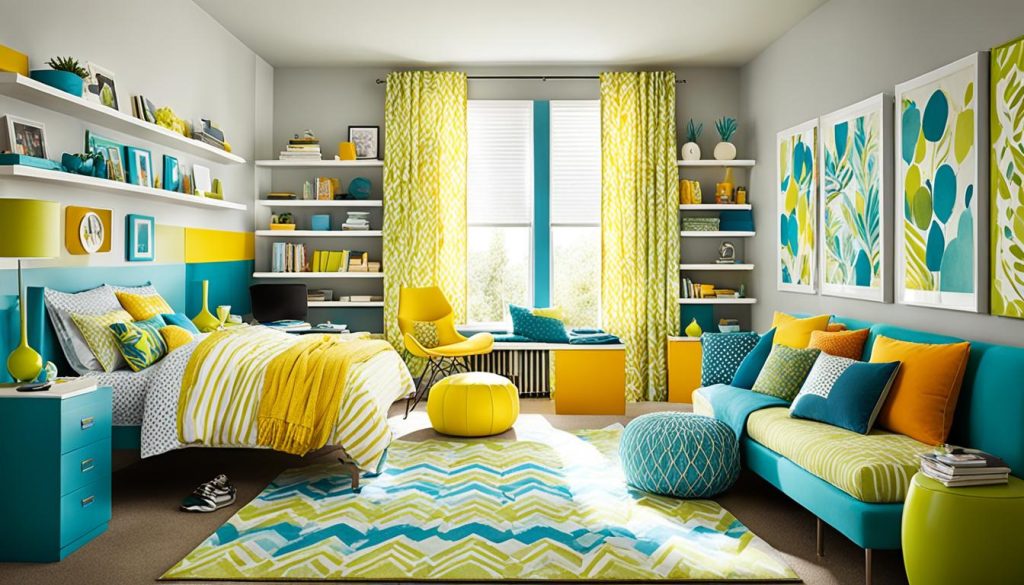
Historical Significance of Colors
Colors have always meant something special. In old times, red showed power and life. Blue was for royalty and gods. Green meant growth and new beginnings. These meanings still affect how we see colors today, even in teen rooms.
Impact of Colors on Mood and Behavior
Colors can make teens feel certain ways. For instance:
- Red can make teens feel happy and passionate, but might make some feel angry.
- Blue helps teens relax and think deeply, great for studying.
- Green makes teens feel calm and in harmony, perfect for chilling out.
- Yellow makes teens more productive and hopeful, ideal for creative spots.
Using color psychology in design can make teen spaces better for their feelings and actions. The right colors can turn a room into a place that supports their happiness and growth.
The Importance of Color in Teen Spaces
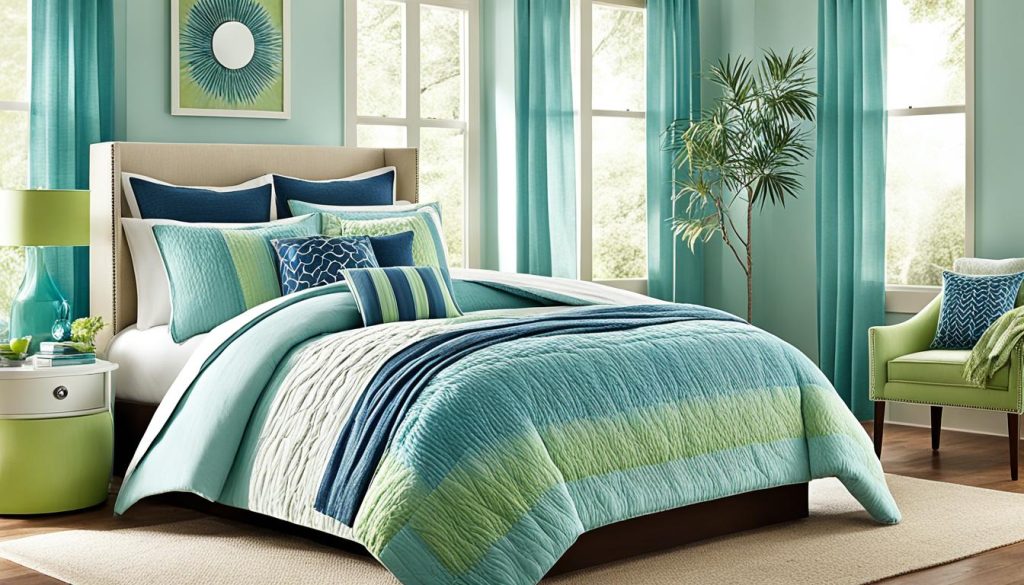
Color is key in making teen spaces special. It can change a room’s feel, making it warm, peaceful, or exciting. Teens often find it hard to pick colors because their tastes and feelings change a lot.
By understanding color psychology, you can make spaces that fit their lives and personalities. This makes a big difference.
Color affects teen mental health a lot. Warm colors like rose and honey make a cozy feel. Cool colors such as pale green and soft blue help calm them down. These colors can change how they feel, think, and do.
Teens usually like cooler colors and soft hues. They help keep them focused and don’t make them stressed.
Here are some tips for designing teen bedrooms:
- Use accent colors to add personality
- Incorporate neutral tones for balance
- Experiment with bold colors for self-expression
- Install artwork to personalize the space
- Play with lighting techniques for ambiance
Tools like the Color911 app can help teens pick colors and get ideas. Letting teens decorate their own spaces helps them feel more in control and creative. This leads to a room they’ll be happy with and better mental health.
“Color is a power which directly influences the soul.” – Wassily Kandinsky
Red: Energizing and Passionate
Red is a standout color for studying and teenage bedrooms. It’s vibrant and full of energy. This color brings excitement and passion to any room.
Benefits of Red in Teen Bedrooms
Red boosts energy and encourages active participation. It helps increase metabolism and breathing, great for teens needing motivation. In STEAM labs, red seating keeps students energized and creative.
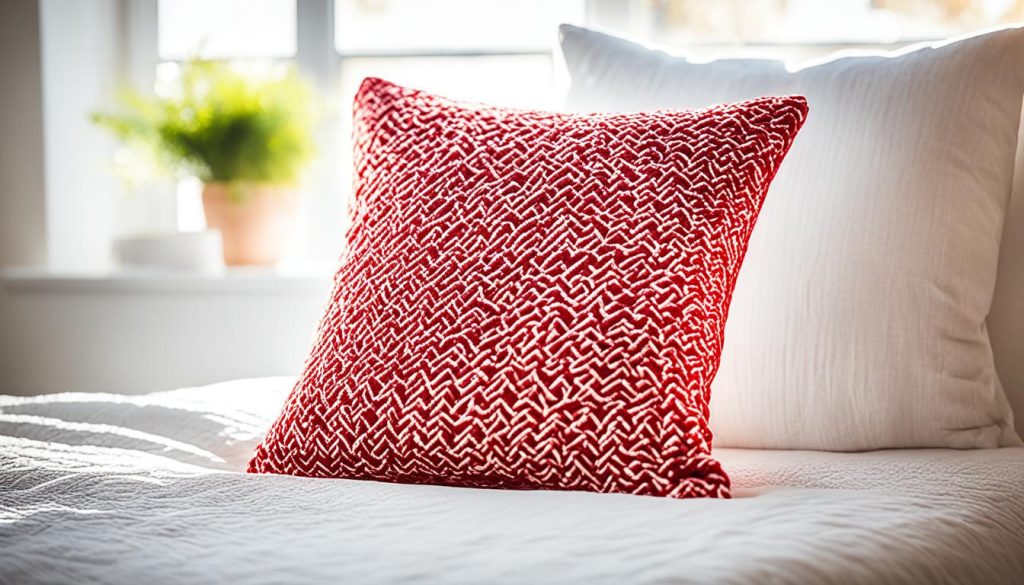
Potential Drawbacks of Overusing Red
Too much red can be overwhelming. Studies show it can lead to negative feelings and tension in children’s rooms. It’s key to balance red in your teen’s space.
Best Ways to Incorporate Red Accents
Use red as an accent to avoid overwhelming the space. Add red throw pillows, artwork, or a statement wall. Pairing red with neutrals like white or gray creates a balanced look. This way, you get an energizing study area without losing comfort.
“Red is the color of passion and energy. Used wisely, it can transform a teen’s bedroom into a dynamic space for growth and creativity.”
Remember, use red thoughtfully to make a balanced, inspiring space for your teen to do well.
Blue: Calming and Intellectual
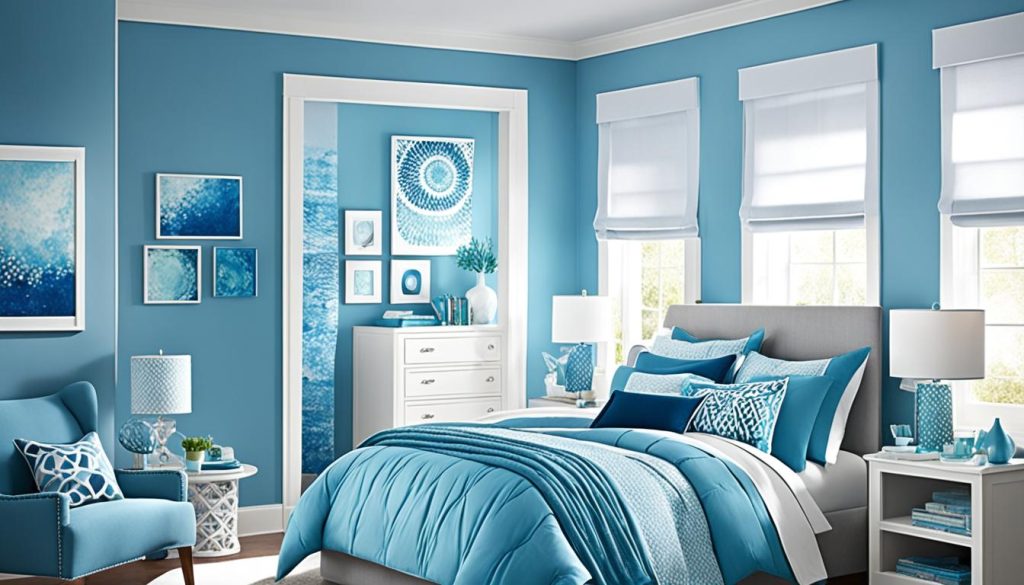
Blue is a top choice for teen rooms because it’s calming and boosts thinking. It brings peace and makes the mind work better. Blue also means loyalty, trust, and wisdom to teens.
Studies show blue has big benefits for teens:
- Improves focus and productivity
- Reduces blood pressure
- Slows heart rate
- Enhances emotional well-being
Light blue is great for bedrooms because it helps teens relax and sleep well. It also helps with studying by making it easier to concentrate and remember things.
“Blue is the only color which maintains its own character in all its tones… It will always stay blue.” – Raoul Dufy
Here are some tips for using blue in your teen’s room:
- Pair with warm accents to balance the cool tones
- Use lighter shades for a spacious feel
- Incorporate blue through bedding, curtains, or wall art
While blue is calming, what works best varies by person. Talk with your teen to make sure their room shows who they are and what they like.
Green: Natural and Balancing
Green brings the outdoors inside, making it a top pick for color therapy for teens. This color connects with nature, creating a soothing atmosphere in teen bedrooms. It’s like having a piece of the forest right in your room!
Nature’s Benefits
Studies show green environments reduce stress and improve mood. Teens exposed to green spaces often experience better cognitive function and creativity. It’s a simple yet effective way to boost mental wellbeing.
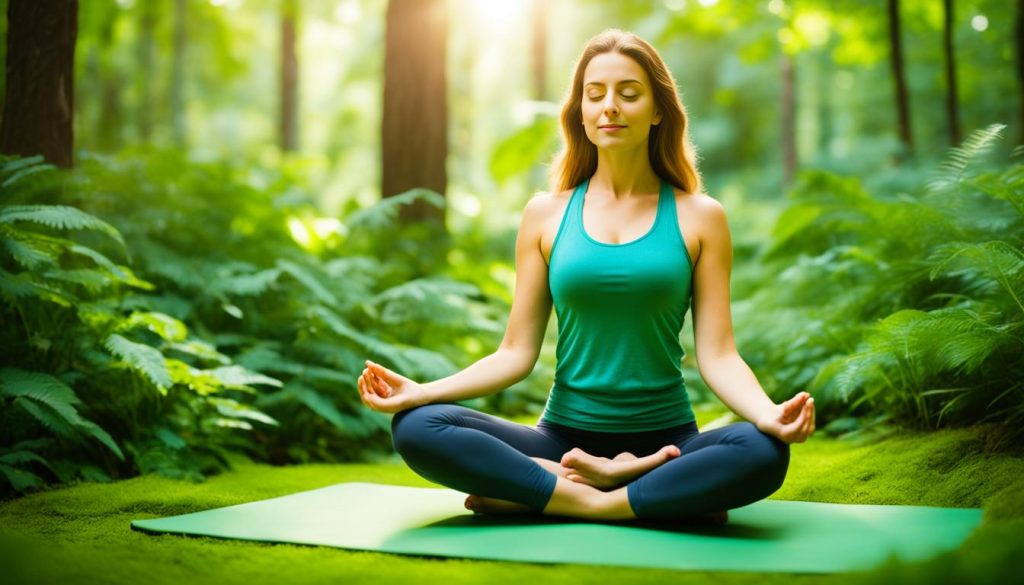
Focus and Relaxation
Green isn’t just pretty – it’s practical too! This color lowers blood pressure and heart rate, promoting a sense of calm. For teens dealing with anxiety or stress, a green bedroom can be a sanctuary. It’s perfect for creating a peaceful study space or a relaxing hangout spot.
Teen Room Color Ideas
When it comes to green teen room color ideas, the options are endless. Try these combinations:
- Sage green walls with white accents for a fresh, clean look
- Mint green paired with soft gray for a modern vibe
- Forest green and warm wood tones for a cozy cabin feel
Remember, green doesn’t have to cover every surface. Even small touches like plants or green bedding can make a big impact. It’s all about finding the right balance for your teen’s unique style and needs.
Purple: Creative and Regal
Purple adds a royal and creative vibe to teen bedrooms. It was once rare and only for nobility. Now, it’s a favorite among teens for its mix of class and creativity.
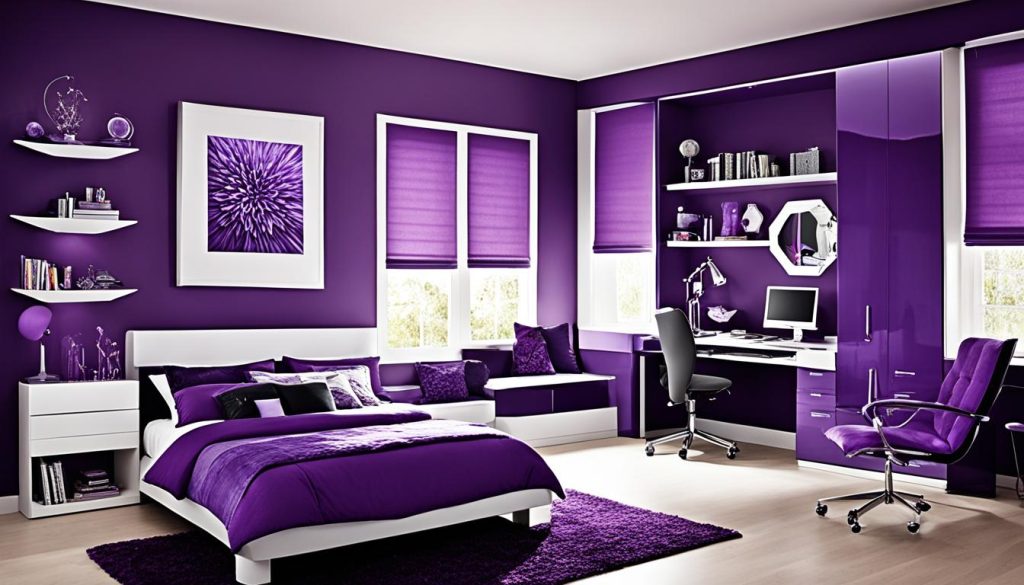
Purple has a big impact on teens’ minds. It sparks creativity, ideal for artistic teens. Light purples calm the mind, while deep purples add a sense of drama.
- Violet or plum hues add flair to design schemes
- Lavender and mauve create a serene, regal effect
- Purple works well in art studios and dressing areas
Lavender scent can lower heart rate and blood pressure, helping teens relax. This makes purple great for unwinding after a long day.
“Purple is not just a color, it’s a feeling.”
When adding purple to a teen’s room, balance is crucial. Mix it with neutral colors to keep the space calm. Use purple in small ways, like curtains, bedding, or art, for a regal touch without taking over.
Yellow: Cheerful and Stimulating
Yellow brings sunshine into teen bedrooms. This vibrant color boosts mood and energy. It can make a room feel happy and support teen mental health.
Boosting Memory and Concentration
Yellow stimulates the mind, perfect for study areas. It helps with memory and focus. Paint a yellow wall near your desk or add yellow accessories to your space.

Cautions When Using Yellow
Too much yellow can be overwhelming. Bright yellow walls might make it hard to relax. Use yellow as an accent to add cheerfulness without too much stimulation.
Complementary Colors for Yellow
Balance yellow with calming colors. Soft blues or greens work well with it. This mix can make your space feel balanced and positive.
- Yellow + Blue: Energizing yet serene
- Yellow + Green: Fresh and natural
- Yellow + Gray: Modern and sophisticated
Remember, use yellow wisely. A little of this sunny color can brighten your mood and room. It supports your well-being and mental health.
Orange: Friendly and Confidence-Boosting
Orange is a vibrant color that greatly affects teen mental health. It’s warm and inspires creativity and boosts self-esteem. This makes it a great choice for bedrooms.
Orange is linked with stability, reassurance, and warmth in color psychology. It makes people feel friendly and confident. This is great for teens dealing with social issues. Orange creates a lively space, ideal for studying or hanging out with friends.
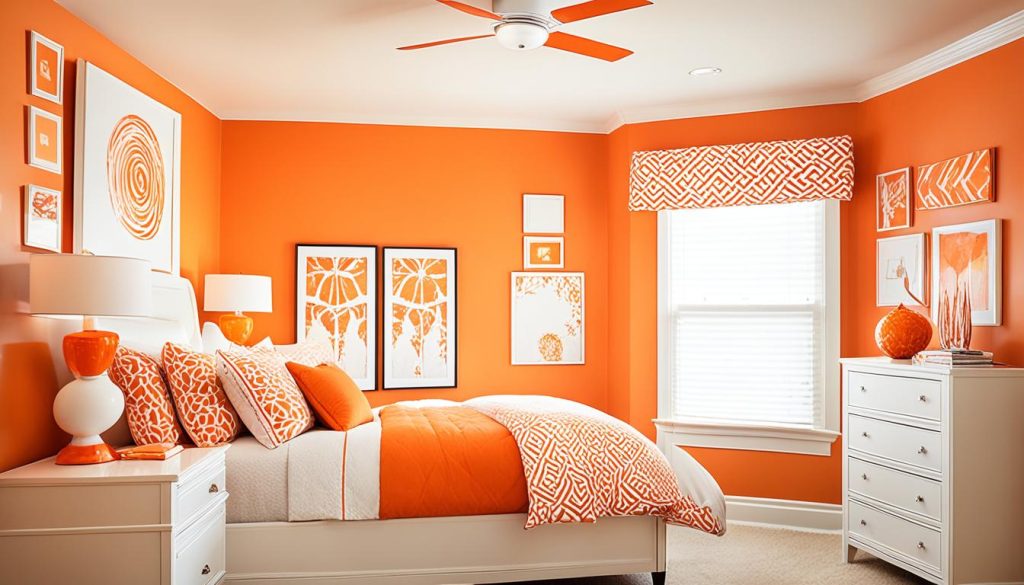
Using orange in a teen’s room requires balance. It’s stimulating but can affect sleep if used too much. Use it as an accent on one wall or in curtains, pillows, or artwork. Mixing orange with cooler tones creates a balanced, energetic space that helps with relaxation and staying focused.
“Orange is reputed to increase energy levels and boost the appetite. It may even elevate IQ by as much as twelve points!”
For teens with low mood or lack of motivation, orange can change things. It promotes activity, excitement, and enthusiasm. This can help reduce apathy and depression, improving mental health.
The aim is to make a space that shows your teen’s personality and supports growth. By adding orange thoughtfully, you can use its positive qualities to help your teen’s emotional growth.
Pink: Nurturing and Calming
Pink is often linked with love and nurturing. It’s a key color in color therapy for teens’ rooms. This color helps make bedrooms peaceful and restful, making it great for teen bedrooms.
Breaking Gender Stereotypes
Pink isn’t just for girls! It can soothe teens of any gender in their spaces. In Japan, pink is seen as masculine, showing how colors mean different things in different places.
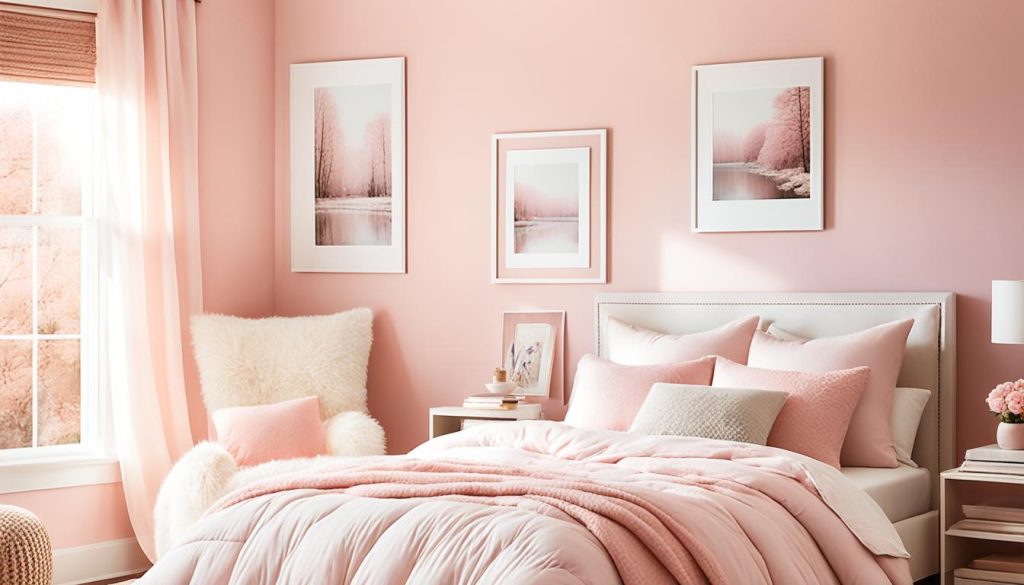
Balancing Pink in Teen Bedrooms
To stop the room from looking too sweet, mix pink with darker colors like charcoal or black. Pink works well in small amounts or as an accent. For a big statement, paint one wall pink and the rest neutral.
Pink’s Effect on Empathy and Emotions
Pink has a calming effect and boosts empathy. Studies show it can make people feel physically relaxed. Some sports teams paint their opponents’ locker rooms pink to keep them calm!
Pink symbolizes healing, innocence, peace, and tranquility. It’s linked to traits like softness, kindness, and compassion.
Remember, different shades of pink can create different moods. Bright pink can spark creativity and happiness, while pale pink can help with calmness and feeling accomplished. When planning your teen’s bedroom, think about these effects to make the perfect atmosphere.
Neutral Colors: Creating Balance and Sophistication
Neutral shades like white, beige, and gray are great for teen bedrooms. They offer a blank canvas for teens to express themselves with accessories. These colors bring balance and a touch of sophistication.
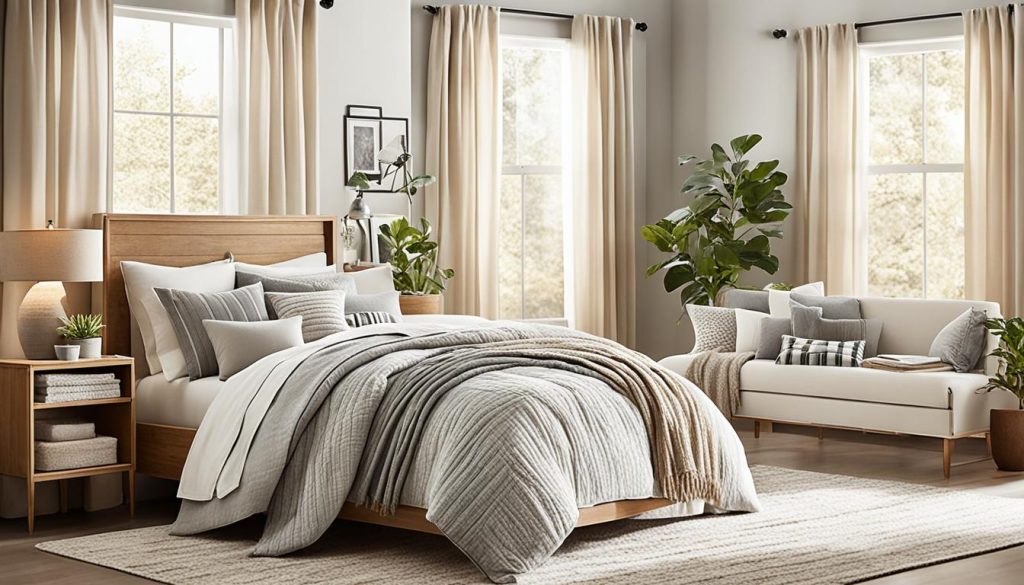
White brings peace and boosts creativity, making rooms look bigger. It suits teens who prefer a simple, clean style. Brown adds a cozy feel, perfect for a snug retreat. Black adds drama and is great for bold teens.
Neutral colors aren’t just for bright colors. They offer a timeless look that can grow with your teen. They work well with trendy colors and patterns, making it easy to update the room’s style.
“Neutral colors in teen bedrooms create a sophisticated foundation that adapts to changing tastes and trends.”
To use neutrals well:
- Use white for a light, airy look
- Add warmth with beige or tan accents
- Use gray for depth
- Add natural textures for interest
Neutral doesn’t mean dull. Mixing different shades and textures creates a rich, welcoming space. It shows off your teen’s unique style while keeping the room calm and sophisticated.
Color Psychology in Teen Bedrooms: Mood Boosters
Choosing the right colors for a teen’s bedroom can greatly improve their mood and well-being. Colors in teen rooms do more than just look good. They can change how they feel, focus, and even sleep. Let’s look at how to pick colors that make teens feel better.
Selecting the Right Color Palette
Think about the feelings you want to create in a teen’s room. Blue is perfect for calmness and focus, while yellow lifts energy and mood. Green connects with nature and reduces stress. Each color has its own special effect:
- Red: Energizes and sparks passion
- Purple: Inspires creativity and luxury
- White: Creates peace and cleanliness
- Brown: Adds warmth and security
Combining Colors for Maximum Impact
Mixing colors can create amazing results. Pair energizing colors with calming ones for balance. For instance, blue walls with yellow accents can be both soothing and uplifting. This mix is great for study areas, boosting focus and positivity.
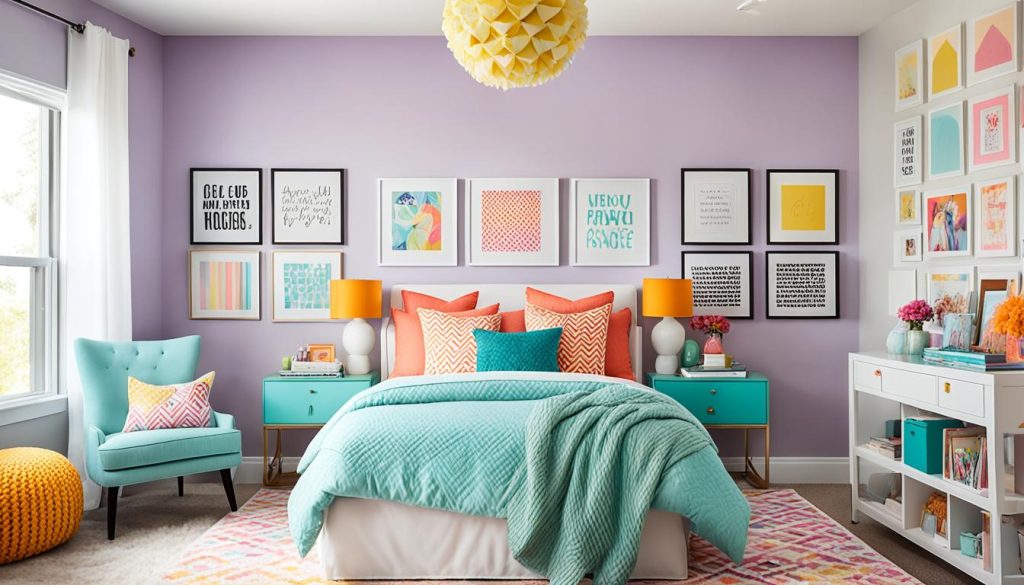
Personalizing the Space with Color
Let teens show off their style with color. They might adore bold purples for creativity or soothing greens for a relaxing feel. Adding their favorite colors makes the room truly theirs. The aim is to create a space where they feel at ease and inspired.
“Colors, like features, follow the changes of the emotions.” – Pablo Picasso
Understanding color psychology lets you create spaces that boost teens’ moods. The right colors can turn a bedroom into a sanctuary for rest, creativity, and growth.
Practical Tips for Applying Color Psychology in Teen Bedrooms
Bringing color psychology into teen bedrooms is fun and rewarding. Think about using accent walls for bold colors. This way, you can add vibrant colors without making the space feel too much.
Color psychology is key to teen development. Use accessories like throw pillows, rugs, or artwork to add colors. This makes it easy to change things up as your teen grows. Experts say you should repaint bedroom walls every 5 to 15 years.

Balance strong colors with neutrals for a peaceful feel. Warm neutrals like beige, off-white, and oatmeal are great choices. For something trendy, try blush tones such as Sherwin Williams’ Intimate White.
Get your teen involved in picking colors. Teach them about how different colors affect us:
- Red: Happiness, passion, courage
- Blue: Calmness, intelligence, trust
- Green: Freshness, harmony, nature
- Yellow: Joy, energy, productivity
Use color to set different areas in the room. A light blue like Benjamin Moore’s Serenely can make a study corner calm. For a place to relax, warm whites like Timid White or Creamy work well.
By using these color psychology tips, you can make a bedroom that helps your teen feel good and grow.
Closing Thoughts
Color psychology is key in making teen bedrooms special. Each color has its own effect on mood and behavior. From reds that energize to blues that calm, the right colors can make a room a safe space for growth and happiness.
Warm colors like red and orange can make a room lively and full of energy. Cool colors such as blue and green help bring peace. Yellow makes people happy, and purple encourages creativity. Neutral colors add balance and style to teen rooms.
Think about how colors affect sleep too. Soft blues, greens, and lavenders can help with sleep. But bright colors might keep someone awake. Using their favorite colors makes the room more than just a place to sleep or hang out. It’s a space that supports their feelings and growth.
Color psychology in teen spaces is more than just making things look good. It’s about creating a place where teens can be themselves, relax, and do well. So, let’s use colors to paint a bright future for our teens, one color at a time.


